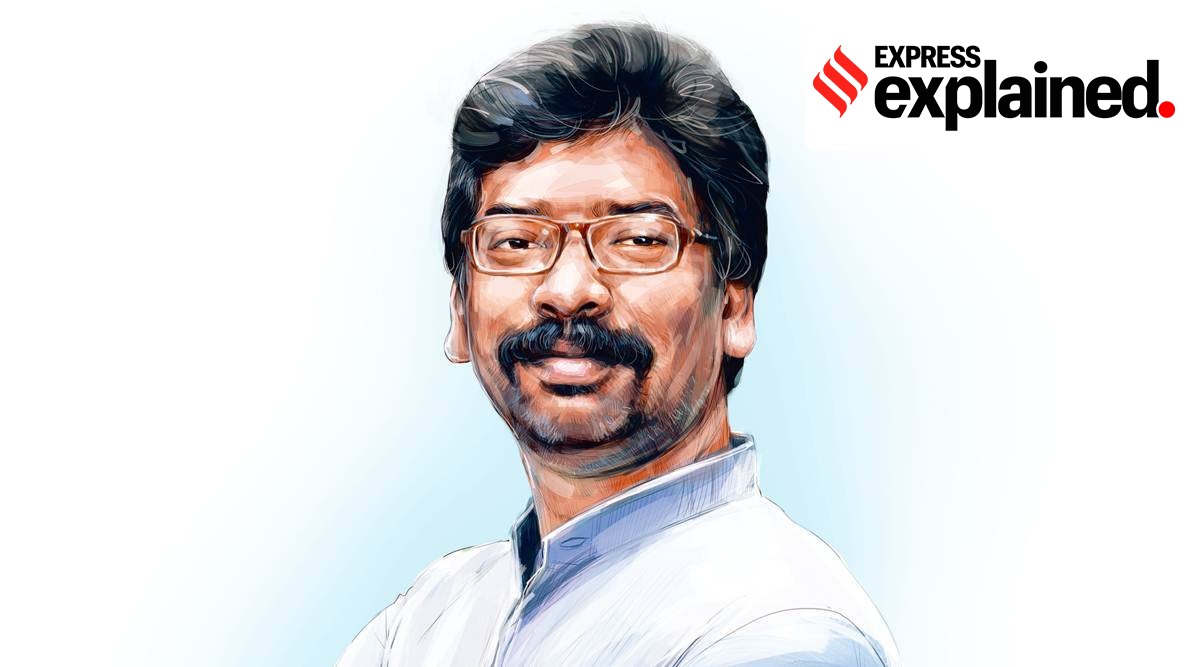The Jharkhand government has launched the SAAMAR campaign. How does it propose to tackle acute malnutrition in children and anemic women?
The Jharkhand government Wednesday announced the launch of SAAMAR (Strategic Action for Alleviation of Malnutrition and Anemia Reduction) campaign to tackle malnutrition in the state. The campaign aims to identify anemic women and malnourished children and converge various departments to effectively deal with the problem in a state where malnutrition has been a major problem. The recent Economic Survey quoted The Comprehensive National Nutrition Survey conducted in the state during March 2017 to July 2017 stating that based on the sample data, 36% of under five years of age are stunted—height for age, 29% are affected from Wasting—weight for height, and 45% are underweight—weight for age, indicating the status of undernutrition.
Newsletter | Click to get the day’s best explainers in your inbox
What are the existing schemes to tackle malnutrition in Jharkhand?
Every second child in the state is stunted and underweight and every third child is affected by stunting and every 10th child is affected from severe wasting and around 70% children are anemic, as per National Family Health Survey-4 data. The state government runs various schemes under Child Development Schemes, National Nutrition Mission among others to deal with the situation, but it is not enough. Dealing with malnutrition in the state monitoring has been an important concern due to lack of doctors or health care workers.
What was the need of bringing in the SAMAAR campaign?
According to an internal note of the Women and Child Development Department, although existing schemes are there, seeing the current situation, intervention was required with a ‘different approach’ to reduce malnutrition. SAAMAR has been launched with a 1000 days target, under which annual surveys will be conducted to track the progress. It talks of convergence of various departments such as Rural Development Department and Food and Civil Supplies and engagement with school management committees, gram sabhas among others and making them aware of nutritional behaviour. Most importantly, the campaign, as per the note, also tries to target Primarily Vulnerable Tribal Groups. Stating that there is no research based information available on their food and nutritional habits, it encourages research and proposes fellowships on nutritional behavior of these groups for effective implementation.
? JOIN NOW ?: The Express Explained Telegram Channel
How does SAMAAR propose to tackle acute malnutrition in children and anemic women?
To tackle severe acute malnutrition children, every Anganwadi Centres will be engaged to identify these children and subsequently will be treated at the Malnutrition Treatment Centres. In the same process the anemic women will also be listed and will be referred to health centers in serious cases. All of these will be done through measuring Mid-Upper Arm Circumference (MUAC) of women and children through MUAC tapes and Edema levels, swelling in a small area or the entire body—malnutrition is one of the reasons attributed to this disease. Angawadi’s Sahayia and Sevika will take them to the nearest Health Centre where they will be checked again and then registered on the portal of State Nutrition Mission.
What is the program on adolescent girls and women?
The stages from pregnant women to child birth to two years later are important in saving a child from malnutrition. However, adolescent age also needs to be given priority as all measures taken once the woman is pregnant will prove useful only if adolescent women are educated and made aware of their health. SAMAAR says it will capitalize on the Tejaswini Project functioning in the 17 districts of the state where 12, 800 youth communities—of women and adolescent girls have been formed—are being trained in various skills, entrepreneurship and for jobs. All these adolescent girls and women will be educated on nutritional behaviour too, and all will be given a health and nutrition card where they will be informed on their weight, height, Body Mass Index and Hemoglobin. They will also be asked to consume Iron-Folic Acid and deworming tablets under supervision. The government is also planning to work in seven districts where Tajaswini Yojna has not started.
How will the campaign measure the outcome?
It will start with every panchayat which will be treated as a unit and there will be 8-10 parameters to tackle the nutritional issue. Nutrition Sabhas will be conducted and the Mukhiyas will work along with every villages’ Anganwadi Sevika, Sahayika, Poshan Sakhi, School Management Committee President, Jal Sahiya among others. The Panchayat Secretariat will carry colour coded boards of every village’s nutritional condition. Later a social audit will be conducted after which a panchayat will be given the tag of Malnutrition Free Panchayat. There is a provision of Rs 1 lakh to be given to every panchayat to achieve this.
Source: Read Full Article


